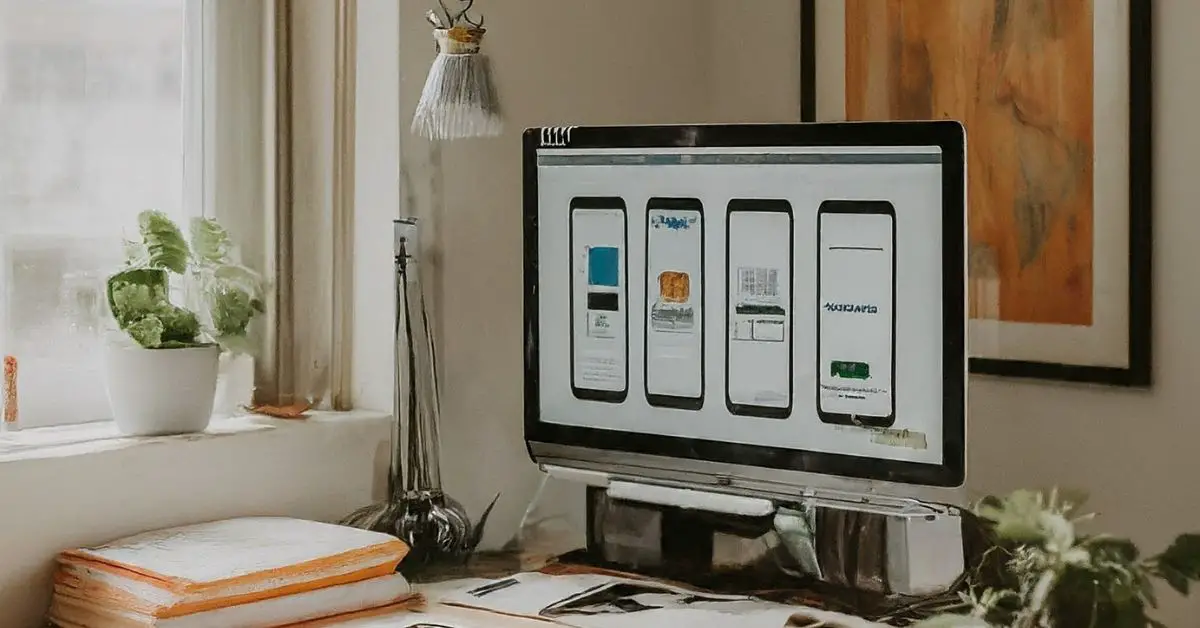Introduction
As we move forward on our path to learning how to become a UX designer, we must first understand the fundamental concepts that underlie this ever-changing industry. “What is a UX designer?” and “UX designer skills and responsibilities” are important components that lay the foundation for potential professionals.
In this section, we will look at the fundamental concepts of UX design and the complex interplay between user experience and digital products. Anyone who wishes to work in this industry should understand the importance of user-centered design and its impact on the success of a product.
Additionally, we will discuss the broad skill set required to succeed as a UX designer, from creativity and empathy to technical expertise. By learning about the various responsibilities of a UX designer, individuals can be better prepared for the difficulties and opportunities that arise in this dynamic and ever-changing field.
Join us as we unravel the mysteries of UX design and pave the way to a rewarding career in creating meaningful and impactful user experiences.
What is a UX Designer?

As the name suggests, a UX designer works to improve the user experience of digital products. This includes creating designs that not only look great but are also intuitive and usable. A UX designer plays a vital role in product development as they are responsible for ensuring that the final product meets the users’ needs and expectations.
In today’s digital world, where competition is fierce, the importance of user experience cannot be underestimated. Users have become more savvy, they expect seamless interactions and engaging interfaces. A UX designer helps meet these expectations by conducting user research, creating wireframes, and designing interactions that promote usability and accessibility.
A UX designer can create experiences that not only meet but also exceed people’s expectations by having a complete understanding of their desires and behaviors. Apart from creating happy customers, this user-centric strategy helps make the product overall successful in the market. A UX designer essentially acts as a liaison between technology and user needs, ensuring that digital products are not only useful but also fun to use.
UX Designer Skills and Responsibilities

The cornerstone of UX design, user research, is essential to understand user behavior and preferences to inform design decisions. Wireframing and prototyping are essential to visualize concepts and test ideas before implementation. Interaction design is all about making user experiences more intuitive and engaging. Usability testing ensures that designs are user-friendly and meet the needs of the target audience.
Apart from the skills, a UX designer has several key responsibilities. Conducting in-depth user research helps identify user needs and pain points. Creating user personas allows designers to empathize with users and tailor designs according to their preferences. Designing user flows and wireframes reflects the user journey and information architecture. Collaborating with developers and stakeholders ensures that design solutions align with technical feasibility and business goals, leading to a consistent and successful product development process.
What is A/B Testing?

A/B testing, sometimes referred to as split testing, is an essential UX design technique that compares two iterations of a webpage or app screen to find out which one works better. This process involves dividing users into two groups, with each group shown a different version. The primary objective is to find the version that improves user engagement, conversions, or other desired outcomes.
A/B testing is essential for UX design as it helps maximize user experiences. Through experimentation with different design components, including button colors, layouts, or call-to-action locations, designers can gain valuable insights about user preferences and actions. With the help of this data-driven method, it becomes easier to make educated design decisions that overall improve usability and user happiness.
There are some important processes to follow to successfully perform A/B testing. First and foremost, developing hypotheses is crucial to define the objectives of your test. Developing multiple iterations to be tested is the next step in creating variation. Running tests on both versions accurately and concurrently is essential for objective results. Ultimately, examining the results obtained from user engagement with each iteration provides important insights to improve and enhance the design based on real user inputs.
Types of UX Designer Jobs

The field of user experience design offers a wide range of responsibilities. Aspiring designers can better understand their interests and strengths by becoming aware of the many roles available to them.
1. UX Researcher
A common position is that of a UX researcher, who focuses on gathering information from users through surveys, usability testing, and interviews. Their duties include performing data analysis to enhance user happiness and guide design choices.
2. Interaction Designer
The interaction designer is a vital role that focuses on designing user interfaces that are both engaging and intuitive. They work on user flows, wireframes, and prototypes to guarantee a seamless user experience.
3. Visual Designer
The visual design of a product is the responsibility of the visual designer, who focuses on components such as color schemes, typography, and graphics. Their goal is to create aesthetically pleasing designs that complement the brand and enhance user interactions.
4. Information Architect
The primary goal of an information architect is to enhance the usability of a product through the organization and structure of information. They create information hierarchies and navigation systems to make it easier for consumers to find what they need.
People can customize their career advancement based on their interests and skill sets by checking out these many positions, which can provide practical information about the variety of accessible career paths and opportunities in UX design.
How to Become a UX Designer?

To become a successful UX designer, you need to follow a strategic roadmap that combines education, practical experience, and networking opportunities.
First, consider your educational paths. Earning a relevant degree such as human-computer interaction, graphic design, or psychology can provide a solid foundation. Additionally, certifications from reputable institutions can increase your credibility in the field. Online courses and bootcamps offer flexible learning options to sharpen your skills.
Next, focus on creating an attractive portfolio. A strong portfolio showcases your design projects and problem-solving abilities. Include several projects that demonstrate your creativity and understanding of user-centered design principles. Remember, quality is more important than quantity.
It’s important to gain practical experience. Look for an internship or entry-level position to apply your knowledge to real-world scenarios. Getting involved in freelance projects or volunteer work can also help you build a diverse portfolio and gain valuable insight.
Finally, make networking and professional development your top priority. Participate in UX communities and forums to meet professionals in the field and learn about current trends. Attend conferences and workshops to broaden your knowledge and pick the minds of industry experts. Always remember that networking and continuing education are crucial to success in the ever-evolving field of UX design.
Conclusion
In conclusion, becoming a UX designer requires a strategic approach that combines education, practical experience, and networking. By earning a relevant degree in fields such as human-computer interaction or graphic design, you can establish a strong foundation. Certifications from reputable institutions and online courses can further enhance your skills and credibility in the industry.
Creating a diverse portfolio that showcases your creativity and problem-solving abilities is crucial. Remember, quality projects that demonstrate your understanding of user-centered design principles are more impressive than quantity.
Applying your knowledge in real-world situations requires gaining practical experience, which can be gained through volunteer work, freelance projects, internships, or entry-level jobs. To keep up with trends and broaden your expertise, you should also attend conferences, join UX communities, and network with experts in the field.
Success in the ever-changing profession of UX design depends on networking and continuing education. To succeed in this fascinating and dynamic field, embrace obstacles, maintain your curiosity, and never stop making changes.
What is the design process, Complete Guide
Arsalan Malik is a passionate Software Engineer and the Founder of Makemychance.com. A proud CDAC-qualified developer, Arsalan specializes in full-stack web development, with expertise in technologies like Node.js, PHP, WordPress, React, and modern CSS frameworks.
He actively shares his knowledge and insights with the developer community on platforms like Dev.to and engages with professionals worldwide through LinkedIn.
Arsalan believes in building real-world projects that not only solve problems but also educate and empower users. His mission is to make technology simple, accessible, and impactful for everyone.



